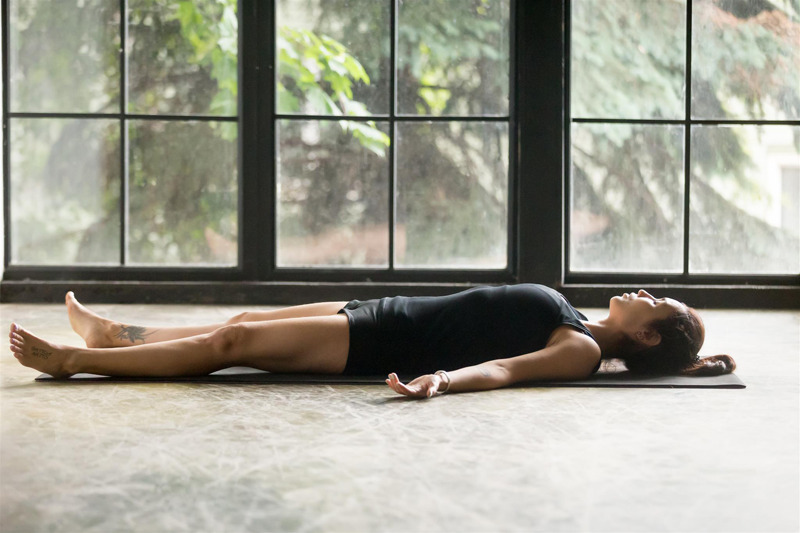
Reasons to Start Yoga in 2018
28th September 2018
Yoga for Fasting
5th October 2018How Yoga Can Help Heal Trauma

In the East, the importance of the mind-body connection for good health has been recognised for decades. In recent years, Western culture has started to take note and follow suit. With a huge amount of research to support this link, people worldwide are putting on their yoga pants to better their mental health. In addition to combatting mental illness, the therapy is now used to treat trauma-related issues through a combination of physical movement and breathing techniques. In this article, we explore how yoga can help heal trauma.
How Yoga Can Heal Trauma
When people hear the word trauma, they often think of it as a past event that happened many years ago. While this is true to a certain extent, trauma is better explained as the residue from the event that settles in the body. After a traumatic event, the aftermath remains inside you and shows itself as tension, shallow breathing, and anxious thoughts. Often, people who are traumatised become afraid of these sensations and start to detach from their physical body. Through yoga, you can slow down your breathing and control your heart rate to decrease stress. Teaching you to feel the sensations within your body, the therapy can help those with trauma to befriend their body once more.
Is Other Therapy Important?
For best results, yoga should be used alongside other forms of therapy. Some people find it helpful to talk through their emotions, rather than just trying to deal with them. If you’ve experienced trauma, it’s common to have a distorted relationship with your body. While talk therapy can help to rationalise things in the mind, yoga can teach you to love yourself once more. While being able to articulate your emotions is important, the most important part of therapy is learning to regain ownership of your body.
How Effective is Yoga Treatment?
Studies have shown that yoga is just as beneficial as meditation for reducing traumatic stress symptoms. In some cases, the holistic therapy proved to be more effective than traditional medicines and provide longer-lasting relief. Many of the studies involved neuroimaging of the brain before and after yoga practice. Through these tests, it was shown that the area of the brain involving self-awareness is activated by using yoga. After a traumatic event, the brain will often lock these areas and the re-opening is needed in order to heal.
Poses to Release Trauma
Pond Pose
When we experience trauma, the diaphragm can become compressed. Pond Pose can be used to stretch and lengthen the chest to allow the diaphragm to move as usual. When used regularly, this can help to free the breath and calm the nervous system.
To practice Pond Pose, begin on your back with your legs extended. Next, press your thighs into the mat and lengthen your waist as much as possible. Reach your arms above your head until you feel a suction in your stomach. You are in Pond Pose. Hold the asana for around 5 breaths before releasing your arms.

Bound Angle Pose
Much like the diaphragm, the pelvis is often bound when we experience fear. As a result of the fight or flight response, adrenaline is released into the body when we feel threatened. While this is necessary during real danger, it can become a default mode in those with trauma. Over time, this can make the muscles tight and the body exhausted. Thankfully, bound angle pose releases the hips to reduce built-up tension.
To practice the asana, begin in a seated position. Bending your knees out to the sides, bring the soles of your feet together and interlace your fingers around the toes. As you inhale, press your pelvis down into the mat and extend your spine. Draw your shoulders down and back and move your chest forward. Finally, press your knees down into the mat to increase the stretch. You are in Bound Angle Pose. Hold the asana for 5-8 breaths before releasing.
Supported Bridge Pose
Restorative poses can relieve trauma by balancing the nervous system. Keeping your head below your heart, Supported Bridge Pose is one of the most effective. As the nerves of the parasympathetic nervous system are found in the spine, a yoga block is used to stimulate this area.
To practice the asana, begin on your back with your knees bent. Keeping the soles of your feet on the floor, relax your arms and let them drop to the sides of your body. Next, tuck your chin into your chest and lift your hips off the mat. Finally, slide the block under your lower back and bring your hips back down. You are in Support Bridge Pose. Hold the asana for around 5 breaths before removing the block. For a deeper stretch, practice the pose with a larger block.
Supported Half Frog Pose
Highly beneficial for healing trauma, this posture releases tension and balances the mind. Opening your hips, pelvic floor, and inner thighs, Supported Half Frog should be practised with a pillow or blanket for best results.
To practice the asana, begin on your stomach with the blanket placed to the right of your body. Next, stack your hands and place them under your head. Bending your right knee, move your right leg out until it is in line with your hip. The inside of your right thigh should now be resting on the blanket. You are in Supported Half Frog Pose. For a deeper stretch, draw your knee towards your armpit. Hold the asana for 5-8 breaths before repeating on the opposite side.
In Summary
If you’re suffering from trauma, pick up a comfortable yoga mat and practice the poses above. If you’re experiencing unpleasant symptoms, it may be worth getting advice from your local GP before making any decisions. Although yoga can help heal trauma, some cases may need additional treatment.

